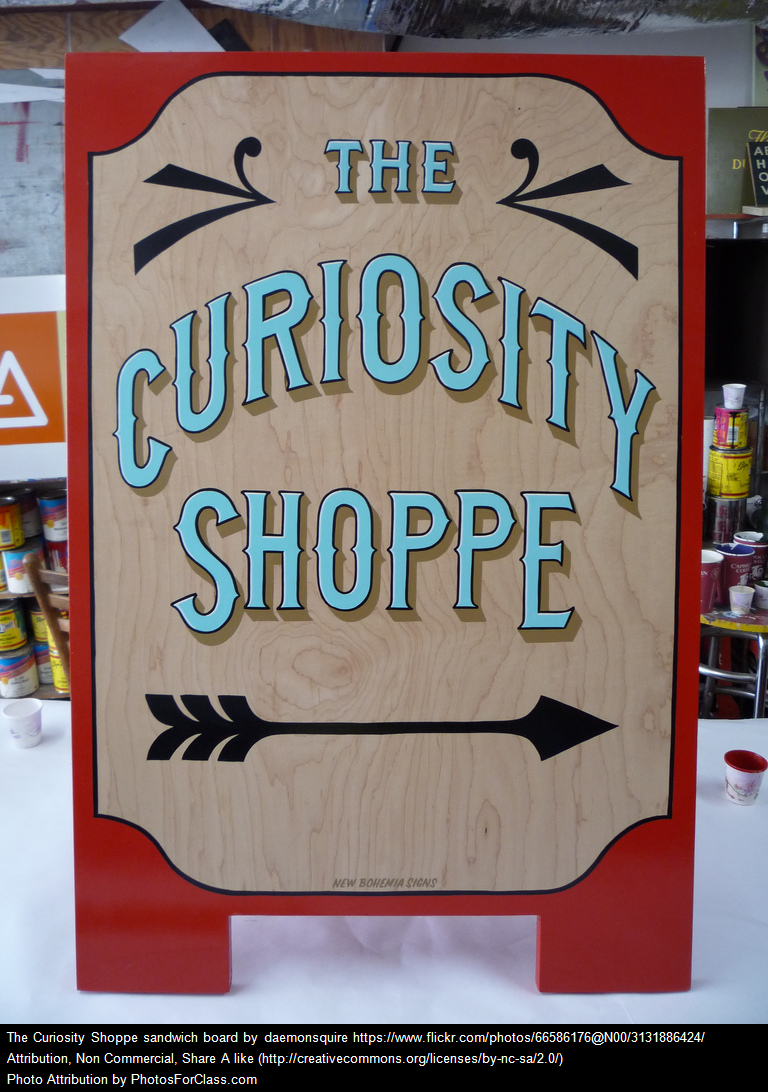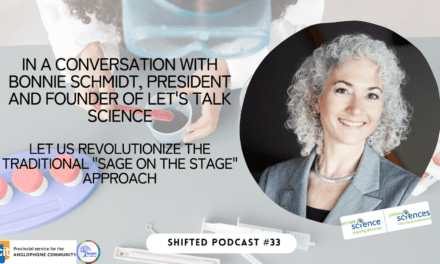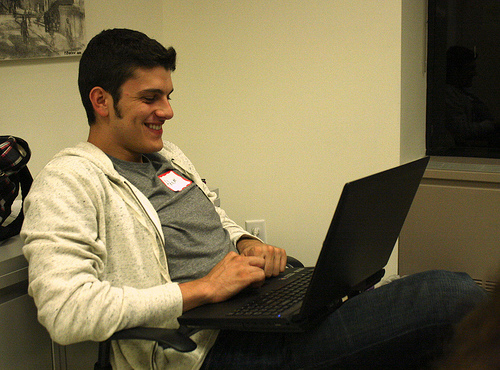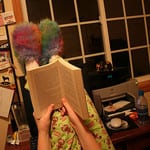
Photo by Chapendra Reading [Day 12] under a CC license
With the winter holidays quickly upon us, many educators across the province will soon be on a two week break from the classroom. Susan and I thought that this might be an opportune time to talk about books, in particular, books that highlight innovative classroom practice, suggest novel strategies to engage students, and provide insight into the mind of the learner. Yes, it’s time to get mentally re-energized people! So, we asked a few of our esteemed colleagues for their latest and greatest in terms professional development reads. Here’s what they had to say:
Audrey McLaren, online math teacher from Dorval highly recommends a recently published book, Flipping 2.0 edited by Jason Bretzmann.
Flipping 2.0 is a book made for teachers by teachers. It’s full of practical ideas for anyone interested in flipping their classroom. Teachers from many different subject areas and levels each contributed a chapter full of their experiences and insights in their own flipping journey. In this book you can find tips not only about teaching math, social sciences, English, and science using the flip, but also flipped professional development, as well as suggestions for what technology tools to use.
It bears mentioning that Audrey is no slouch when it comes to flipping her classroom and did in fact contribute one of the chapters in this book. (Way to go, Audrey!) So, if the ideas in this collection inspire her – they will surely inspire you too.
Peggy Drolet, online math teacher living in Quebec City, gives two thumbs to a book that has seriously impacted on her classroom practice, Teach Like a Pirate by Dave Burgess.
As Burgess suggests on the front cover, “Increase Student Engagement, Boost Your Creativity, and Transform Your Life as an Educator”. What I love about this book is that the author is passionate about both teaching and his subject, history. He describes what that looks like and he shares it with his students: “When we model enthusiasm it rubs off on everyone around us.” In Part 1 of his book, each chapter is dedicated to explaining the acronym PIRATE: Passion, Immersion, Rapport, Ask & Analyze, Transformation, Enthusiasm. Part 2 is full of inspiring examples of how to “Craft Engaging Lessons”. The last section is dedicated to advice on “How to Set Sail”.
When I reflect on my teaching practices, I constantly look for ideas on how to engage students in their learning. Burgess continually refers to teaching as “an adventure full of challenges and excitement”. You can follow him on Twitter @burgessdave. The hashtag #tlap is what drew me to his inspirational book in the first place. By following this hashtag, you too can engage in rich conversations with teachers all over the continent who implement his strategies. Burgess hopes you will (like any good pirate!) “…explore unchartered territories and brave new adventures.”
Aaargh – sounds like a great journey to embark upon!!

Photo by Mo Riza On the Platform, Reading under a CC license
Teacher Neil MacIntosh, the Science Guy at Pontiac High, gave us his (very!) honest review and recommendation of Visible Learning for Teachers: Maximizing Impact on Learning by John Hattie.
So, I was all set NOT to like this slender book, which at first blush, seemed to be a flavour of the month. I started reading without holding any great hopes as to its impact on my teaching or my thoughts on teaching. But…by about Chapter 3, I realized that I was completely into the text and ideas put forth by Hattie, Professor of Education at the University of Melbourne.
This is a follow-up to Visible Learning: a Synthesis of Over 800 Meta-Analyses Relating to Achievement. The data for the meta-analyses have been left safely untouched in the last 100 pages of the text – no worries, gentle reader. What I found interesting and satisfying, and why I didn’t roll my eyes, was Hattie’s calm acknowledgement of the general ideas of teaching; the messiness, and the unrecognized efforts so many teachers put into their profession. Some approaches that teachers have taken have worked and have helped student learning, others less so (learning styles anyone?).
Hattie’s analysis of the data suggests that almost everything a teacher does has a positive effect. However, teachers need to continually focus on best practices to improve student achievement, as well as to be aware of their own impact on their students. The biggest chunk of the book is about lesson preparation and delivery – what works and what doesn’t for both teacher and students. Changes need to be based on evidence…to be measurable. Hattie sees the teacher in the classroom as the primary agent of change, with the support of school leadership. “Teachers’ beliefs and commitments are the greatest influence on student achievement over which we have some control.” Thus, the title is apt: Visible Learning for Teachers, to help them in their practice.
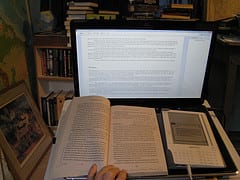
Photo by J Brew Reading with Kindle in my Study under a CC license
But wait, we also have books to share.
From Susan:
I love the book, Invent to Learn: Making, Tinkering and Engineering in the Classroom, by Sylvia Martinez and Gary Stager. If you want to get a taste of what you will find, watch their presentation from the K12 Online Conference. The book is not just about making things but is also about the philosophy of education behind it – of people learning by doing. I’ve written in the past about the maker movement. Stager and Martinez lay out why it is imperative that students be engaged in creating and demonstrate how any teacher can move towards empowering their students to construct, to tinker, and to become problem-solvers in a student-centred environment.
Another book I continue to enjoy leafing through is only available from the iBook store in electronic version. It is currently off the virtual shelves but will be back soon, author, Tim Holt assured me. It is 180 Questions written by Tim with the help of other visionary educators. There are 180 ideas to ponder about teaching and learning accompanied by beautiful photos, live links to web sites and blog posts as well as QR codes embedded which lead you off to articles. This would be a great book to explore on your own or share one page at a time (180 school days) with colleagues. It would generate wonderful discussions as well as help practitioners be reflective about their practice.
From Kristine:
I just finished, The App Generation: How Today’s Youth Navigate Identity, Intimacy, and Imagination in a Digital World by Howard Gardner and Katie Davis. This is a great book for anybody interested in how digital media is shaping the lives of our youth. What I like most about this book is that it is highly research driven but doesn’t feel that way because of how the research or “story” is delivered…through the comparative lens of three very different digital generations, as represented by Howard, Katie and Molly (Katie’s younger sister). The book is full of great interviews and anecdotes, as well as one very interesting study comparing youthful artistic productions pre and post app-suffusion. I also appreciate that the authors don’t seem to be pushing any particular agenda and suggest that the technological world of today can either hinder and make teens “app-dependent” or help and “app-enable” them.
A book that is not all that new (2009) but that recently caught my attention is, Boys Adrift: The Five Factors Driving the Growing Epidemic of Unmotivated Boys and Underachieving Young Men by Leonard Sax, M.D., Ph.D. I have to admit that this is one that I’m saving for the holidays as I have yet to read beyond the introduction. As the parent of three boys, what interests me is that Sax not only delves into 20 years of clinical research to explain why boys today are less resilient and less ambitious than they were before, but he also provides strategies for educators and parents on how to re-engage them.
One final recommendation (and gift!) from Susan:
A book that is great to consult is Wes Fryer’s, Mapping Media to the Common Core. Available as an e-book it is full of ideas of ways students can be creating artifacts in any subject area to demonstrate a deeper understanding of the content. I have a couple of links to copies to give away. I would be happy to mail the cards with the information to the first two non-LEARN educators who leave comments with great professional book suggestions. It would be wonderful to add to the list and share our favourite reads that stimulate us to think about our students and our craft.
With that…we wish you all happy holidays and happy reading!
Kristine Thibeault & Susan van Gelder


